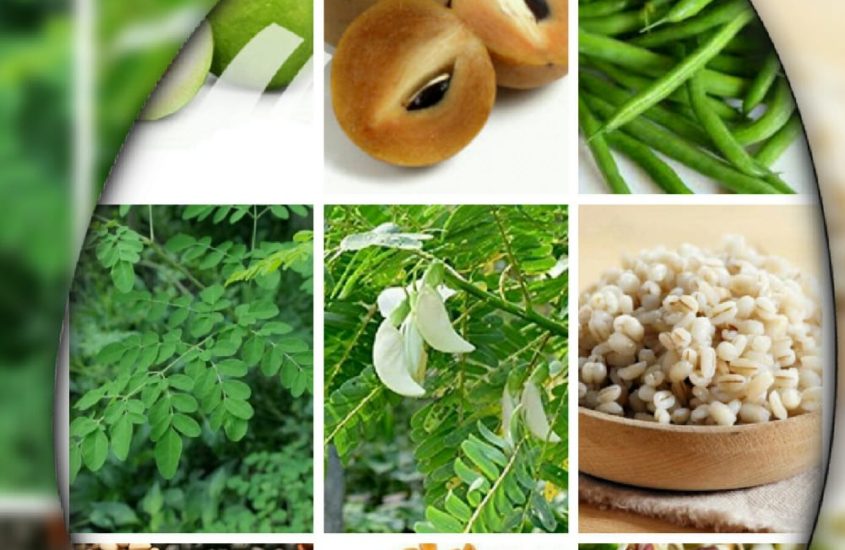Dietary Fibre

What is fiber?
Dietary fiber is a type of carbohydrate, present in the food we eat. We can not digest dietary fiber as we lack the enzyme required to digest it. “roughage” is the other common term used for dietary fiber. Cereals, fruits, vegetables, nuts, pulses, and seeds the sources of fiber.
Types of Dietary Fiber:
Dietary fiber is classified, based on its solubility. Insoluble fiber and soluble fiber are the two main classes of fibers. Most plant foods contain both types of fibers.
Insoluble fiber: This type of fiber insoluble in water. The insoluble fibers can absorb water and increase in size. This property is the reason why insoluble fiber is used as a bulking agent in the food industry. The presence of insoluble fiber prevents the contact of toxins to the mucus lining of the colon. Insoluble fiber stimulates the fecal matter to move fast in the colon. The presence of fiber makes the stool soft. Passing the stool will be easy when one has enough fiber in the diet. You can get the insoluble fibers from wheat bran, whole grains, edible skin, and seeds of fruits and vegetables. Cellulose, hemicellulose, and lignin are types of insoluble fibers.
Soluble fiber: It dissolves in water and forms a thick gel-like substance. Soluble fiber slows digestion and the absorption rate of nutrients. This, in turn, helps in controlling blood cholesterol and sugar. Gut bacteria will break down the soluble fiber in the intestine. Soluble fiber forms food for gut microbes. Oligosaccharides, pectins, β-glucans, and gums are types of soluble fibers.
You can get soluble fiber from different varieties of foods. Oat bran, oatmeal, apples, pears, oranges, grapefruit, cabbage, green peas, corn, and pulses, etc., are rich sources of soluble fiber.
Fenugreek seed has the highest amount of fiber. It has 4.75 g of total fiber & 2 g soluble fiber in 10g.
Is Fiber Important?
YES! Dietary fiber is part of a healthy diet. As fiber is not digested in our body, it passes through the intestine intact and forms the main component of the fecal matter.
The important role of fiber is it makes us feel full and help us eat less and stay satisfied longer. In this way, dietary fiber is important in weight management.
The insoluble fiber has multiple ways of promoting our health. It includes:
- provides the “bulk” needed for intestinal health
- promotes regular bowel movement
- helps in preventing constipation
- protects against colon cancer
Soluble fiber’s role in our health protection is different than that of insoluble fiber. It too has multiple ways to our health protection and that includes:
- slowing the rate of digestion and absorption
- maintaining good gut health
- contribution for immune function
- lowering blood cholesterol
- lowering the risk for heart disease and stroke
For getting the health benefits from fiber, we have to consume daily 1.5-2 liters of water.
Do You Know How Much Dietary Fiber is Recommended?
The recommended daily amount of fiber is
- For adults 25 g for women and 38 g for men
- For older adults (> 50 years) 21 g for women and 30 g for men
The Dietary Fiber Content (g/100 g edible portion) in Different Foods:
- Cereals: 3g* – 15.5g** (* Milled rice,** Barley)
- Pulses: 7g* -25.6g** ( *Horse gram,** Bengal Gram/Chana)
- Seeds & Nuts: 5.4g*-26.2**( Walnut,** Flax seeds)
- Dry Spices:11g*-47.5g** (* Nutmeg,** Fenugreek seeds)
- Vegetables
- Greens: 1.9g* -16.8g**(*Rumex leaves,**Curry leaves)
- Roots:1.1g*- 4.7g**(*Potato red skin,**Lotus root)
- Others:1.5g*-8.7g** (* Tender bamboo shoot,**Matured jackfruit seeds)
- Fruits-Fresh : 0.7g* – 9.6g** (*Dark green Watermelon,** Sapota)
Tips to increase the fiber content in the diet:
- Try not to increase the fiber intake suddenly, as it might cause bloating, diarrhea /constipation
- Add 3 g of fiber per day and gradually meet your target intake

